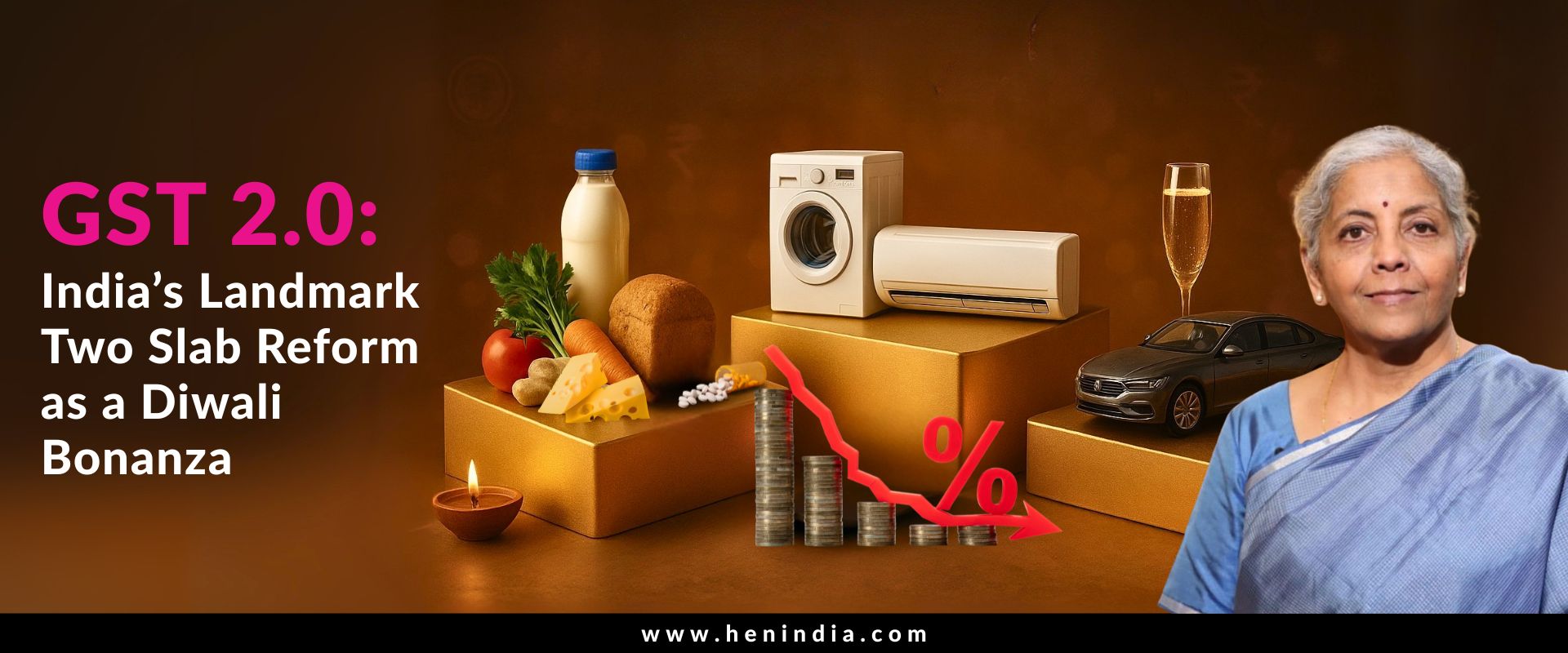A recent report by the Ministry of MSME (https://msme.gov.in/) reveals a staggering 50 million micro and small enterprises (MSEs) operating within the country, playing a vital role in India’s economic growth.
Despite this promising spirit, budding urban businesses face significant challenges. Securing funding to launch their ventures and navigating the labyrinthine world of regulations can be major roadblocks.
Thankfully, the Micro, Small and Medium Enterprises (MSME) schemes implemented by the Indian government offer a vital support system. These schemes provide financial aid, simplify access to credit, and streamline regulatory procedures, empowering urban entrepreneurs to bridge the gap between their dreams and a flourishing business.
Understanding the MSME Backbone
- Micro Enterprises: Defined as businesses with investment up to ₹1 Crore and turnover up to ₹5 Crore.
- Small Enterprises: Investment limit lies between ₹1 Crore and ₹10 Crore, while turnover falls within the range of ₹5 Crore and ₹50 Crore.
- Medium Enterprises: Have an investment limit of up to ₹20 Crore and a turnover limit of up to ₹100 Crore (further revised to ₹50 Crore investment and ₹250 Crore turnover).
Key Data
- Employment Generation: MSMEs employ over 60 million individuals through over 26 million enterprises, fostering inclusive economic development. View Source
- GDP Contribution: MSMEs account for almost 30% of India’s GDP, highlighting their crucial role in driving the national economy.View Source
10 Must-Know Govt Schemes to Boost Your MSME
1. Prime Minister Employment Generation Programme (PMEGP)
- What is PMEGP?
The Prime Minister’s Employment Generation Programme (PMEGP) is a government initiative designed to give you a financial boost if you’re looking to launch a new business. - Who Manages It?
The Khadi and Village Industries Commission (KVIC) oversees PMEGP at the national level. They work with various state-level agencies like District Industries Centres (DICs) and banks to make the process easier for you. - How Much Support Can I Get?
The government can contribute up to:- ₹25 lakhs: for businesses involved in manufacturing.
- ₹10 lakhs: for businesses in the service sector.
- Subsidy Bonus:You may qualify for a higher subsidy depending on your location and background.
- General applicants:15% subsidy in urban areas.
25% subsidy in rural areas. - Special categories: Up to 25% subsidy in urban areas.
Up to 35% subsidy in rural areas.
( This includes groups like SC/ST, women, and ex-servicemen.)
- General applicants:15% subsidy in urban areas.
- Who Can Apply?
- Anyone above 18 years old can apply.
( You’ll need to have passed at least 8th standard for projects costing over ₹5 lakh in the service sector and over ₹10 lakh in manufacturing.) - Self-help groups, registered institutions, and charitable trusts can also apply.
- Anyone above 18 years old can apply.
- How Do I Apply?
- Submit Your application online at https://www.kviconline.gov.in/pmegpeportal/pmegphome/index.jsp Click Here
- Take the printout of the application and
- submit your application with project details and documents to your State/Divisional Director of KVIC.
- Who Are Not Eligible?
Businesses already established under previous schemes or those that have received government subsidies before cannot apply.
- Need More Info?
Contact your State Director, KVIC, or the Dy. CEO (PMEGP) in Mumbai for further details and assistance.
2. Credit Guarantee Trust Fund for Micro & Small Enterprises (CGT SME)
- What is CGT SME? The Credit Guarantee Trust Fund for Micro & Small Enterprises (CGT SME) is a game-changer for small businesses in India. It’s a government scheme that helps them get loans without needing collateral, making it easier to access funds for growth and expansion.
- Who Manages It? Backed by the Government: Established by the Ministry of MSME and SIDBI, CGT SME acts as a safety net for banks.
- Guarantee for Banks: If a borrower defaults on the loan, the Trust Fund covers up to 75% of the amount, reducing the risk for banks and encouraging them to lend.
- Collateral-Free Loans: Businesses can get loans up to ₹100 lakh without putting up any assets as security.
- Who Can ApplyExisting and New Businesses: Both established and aspiring micro and small enterprises are eligible to apply.
- How Do I Apply?To apply for the Credit Guarantee Fund Trust for Micro and Small Enterprises (CGTMSE) scheme, you can follow these essential steps:
- Identify a Participating Financial Institution (PFI): First, identify a financial institution that participates in the CGTMSE scheme, such as a bank or Non-Banking Financial Company (NBFC), to apply for the loan.
- Compile Necessary Documentation: Gather all the required documentation as specified by the chosen financial institution. This usually includes business plans, financial statements, and any other specific documents tailored to the lending institution’s requirements.
- Submit Application: Submit your loan application, along with the necessary documentation, to the selected financial institution. Ensure that you meet all eligibility criteria outlined by the lending institution and the CGTMSE scheme.
- Evaluation and Approval: The financial institution will evaluate your loan application, assess the feasibility of your business plan, and verify your eligibility for the CGTMSE scheme. If approved, your loan application will move forward.
- CGTMSE Guarantee: Upon approval, the financial institution will apply for a guarantee cover from the CGTMSE for the sanctioned loan amount. This guarantee mitigates the institution’s risk, increasing the likelihood of approval.
- Loan Disbursement: Once the guarantee is in place and all necessary requirements are met, the financial institution disburses the loan amount to your business.
- How to Repay Loan?
Repay the loan as per the agreed-upon terms and conditions.
- What Documents are Required ?The specific documentation required for a CGTMSE loan application can vary depending on the lending institution and the nature of your business. However, common documents may include:-
- Business plan and project report
- KYC documents of the business owners
- Proof of business ownership
- Financial statements and projections
- Business registration and licenses
- Income Tax Returns
- Bank statements
- Any additional documents specified by the lending institution
- Need More Details?
Website: Visit the official website of CGTMSE for more details.
3. Micro & Small Enterprises Cluster Development Programme (MSE-CDP)
- What is MSE-CDP? The Micro & Small Enterprises Cluster Development Programme (MSE-CDP) is a government initiative designed to empower small businesses (Micro and Small Enterprises, or MSEs) in India.
- What is the Goal?This program aims to:
- Promote eco-friendly manufacturing: Encourage the use of sustainable technologies to reduce environmental impact.
- Expand market reach: Help businesses connect with more customers and increase sales.
- Enhance skills and quality: Provide training and resources to improve the skills of the workforce and ensure high-quality products.
- Develop infrastructure: Create essential facilities within existing industrial areas where small businesses are clustered.
- What Are The Benefits?
- Common Facility Centers (CFCs): These shared facilities provide equipment, services, and resources that individual small businesses might not be able to afford on their own. This includes “Plug & Play Facilities” that are ready-to-use workspaces.
- Support for specialized infrastructure: The program helps establish Flatted Factory Complexes (multi-story buildings for multiple businesses) and develop essential infrastructure like drainage, power lines, and roads within industrial areas.
- Who Can Apply?Existing entrepreneurs operating as a Special Purpose Vehicle (SPV), a legal entity created specifically for this project, can apply.
- What DO I Get?The government provides substantial financial support:
- Up to 80% of the project cost for Common Facility Centers, capped at a maximum of ₹30 crore. This covers building facilities like processing centers, testing labs, and design centers.
- Up to 70% of the cost for Infrastructure Development projects, limited to a maximum of ₹15 crore. This helps develop essential infrastructure like roads and utilities in industrial areas.
- How to Apply? Online applications can be filled at https://cluster.dcmsme.gov.in
- Need More Details?
- This program focuses on supporting existing clusters of small businesses.
The government provides significant financial aid to help businesses overcome infrastructure and resource limitations. - Participation requires operating as a Special Purpose Vehicle.
- By offering financial support and fostering collaboration, the MSE-CDP empowers small businesses to compete more effectively, contribute to a greener economy, and ultimately achieve sustainable growth.
4. 2nd Loan for PMEGP/MUDRA Units
- What is 2nd Loan for PMEGP/MUDRA Units?
The scheme aims at providing existing units with upgradation assistance regarding expansion, whereas financial assistance to the well set-up performing units.
- What Are The Key Benefits:?
- Maximum subsidy allowance would be 15% of the total project cost (and 20% for Hill States and NER).
- The financing banks will provide the term loans as the balance amounts of the total project cost.
- Scheme Applicable For?
Existing and well-accomplished PMEGP/MUDRA units.
- Who Can Apply? Existing entrepreneurs operating as a Special Purpose Vehicle (SPV), a legal entity created specifically for this project, can apply.
- What DO I Get?
- Financial assistance schemes will enable the present PMEGP/MUDRA units towards upgradations and expansions for Service/ Trading units from the year 2018-19.
- Maximum cost of projects for upgradation under Service/Trading sector INR 25.00 lakh and INR 1.00 crore for the manufacturing sector.
- Maximum subsidy is 15% of the project and 20% of the Hill states and NER i.e. INR 15.00 lakh for Non-NER and INR 20.00 Lakh for Hill states and NER.
- Present units which have been financed under PMEGP/MUDRA Scheme whose margin money claims have been addressed and the first loan availed has been repaid in stated time also qualify for these benefits.
- The 2nd loan should further give growth to opportunities and employment generation.
- How To Apply? The beneficiaries must apply by filling an application form on PMEGP e-Portal to submit the application under the 2nd loan for up-gradation. Click Here
- Need More Details? Read the final guidelines for 2nd Loan by MSME – Click Here
5. Entrepreneurship and Skill Development Programme (ESDP)
- What is Entrepreneurship and Skill Development Programme (ESDP)? The scheme aims to promote new enterprises and enable and facilitate capacity building of the existing MSMEs. It also aims to promote and inculcate entrepreneurial culture in the country.
- What is the Goal?The scheme aims to expand the base of entrepreneurship through skill development and providing motivation for self-employment and entrepreneurial skill.
- What Are The Benefits?
- The scheme motivates different sections of the society such as SC, ST, women, differently abled, ex-servicemen, and people belonging to the BPL category to take up entrepreneurship as a career option.
- It provides skill training in various industries and management capacity building training.
- Who Can Apply? It is applicable for all aspiring and existing entrepreneurs.
- How to Apply? Please contact nearby MSME Development Institute, MSME-Technology Centre.
- Need More Details? Addresses and contact details of these organizations are available on Web Portal: http://www.dcmsme.gov.in/contacts.htm Click Here
6. Procurement and Marketing Support Scheme (P&MS)
- What is Procurement and Marketing Support Scheme (P&MS)? The scheme aims at developing the marketability of services and products in the MSME sector by promoting new market access initiatives like organizing/participation in National/International Trade Fairs/Exhibitions/MSME Expo etc and promoting access initiatives and awareness about various marketing relevant topics.
- Key Benefits
- Involvement of Individual MSEs in domestic Exhibition/Trade Fair
- Developing capacity of MSMEs in Development of Marketing Haats, adoption of modern packaging technique, bar code, and e-commerce platform
- Who Can Apply?
Manufacturing / Service sector MSEs registered at Udyog Aadhaar Memorandum (UAM) Portal. - How Do I Apply?To apply for the Procurement and Marketing Support Scheme (P&MS), eligible individual Manufacturing/Service MSEs can follow the below steps:
- Prepare the necessary documents and information as per the scheme guidelines.
- Submit your application online through the designated system.
- Contact the Joint Development Commissioner at the Office of the Development Commissioner, MSME, Nirman Bhawan, New Delhi, for any specific queries or assistance.
- You can reach out to them at Tel.: 011-23061091 or Email: [email protected]
- Download the scheme guidelines for detailed information on the application process and eligibility criteria.
- Ensure compliance with the eligibility requirements and submission guidelines outlined in the scheme to facilitate a smooth application process.
7. International Cooperation (IC) Scheme
- What is International Cooperation (IC) Scheme? The scheme aims at capacity building MSMEs for entering the export market by facilitating their participation in international exhibitions, fairs, conferences, seminars, and buyer-seller meets abroad.
- What Do I Get?It provides actionable market intelligence and reimbursement of various costs involved in exporting goods and services.
- What Are The Key Benefits
- The scheme covers sub-components including Market Development Assistance of MSMEs, Capacity Building of First Time MSE Exporters, and Framework for International Market Intelligence Dissemination.
- It provides opportunities for MSMEs to continuously update themselves to meet the challenges emerging from changes in technology, demand, and new markets.
- Scheme Applicable For?
Under Sub Component I, it is applicable for Ministry of MSME, organizations under the Ministry, State/Central Government Organizations/Institutions, and Registered Industry/Enterprise Associations, etc. - How to Apply?
To apply for the International Cooperation Scheme, you can follow these steps: - Visit the IC Scheme portal at https://ic.msme.gov.in
- On the portal, you can find the application process and guidelines for availing financial assistance under the scheme.
- Review the scheme guidelines (English) which can be downloaded from the portal for detailed information.
- Prepare the necessary documentation as per the scheme guidelines.
- Submit your application through the online application system available on the IC Scheme portal.
- Ensure that you adhere to the eligibility criteria and provide all required details as per the scheme guidelines during the application process.
- Need More Information?
If you have any specific queries or require further assistance, you can reach out to the Under Secretary (IC) at the Ministry of MSME. Their contact information is as follows: Phone: 011-23063219 Email: [email protected]
- Participation of MSME delegations in international exhibitions, trade fairs, and buyer-seller meets in foreign countries in physical and virtual modes.
- Organizing international conferences, summits, workshops, and seminars on relevant themes for the MSME sector in physical and virtual modes.
- Organizing mega international conferences, summits, workshops, seminars, and bilateral/multilateral Government to Government Events in India by Ministry of MSME and its organizations solely or in partnership with industry associations for the promotion of the MSME sector.
8. Digital MSME Scheme
- What is Digital MSME Scheme?
- The scheme aims to make MSMEs digitally empowered and encourage them to adopt ICT tools and applications in their production and business processes.
- It is designed to improve the competitiveness of MSMEs in both national and international markets.
- Scheme Applicable For:
The scheme is applicable for all MSMEs registered under the MSME Act 2006, including those included as per executive orders issued by the Office of DC (MSME) consistent with the MSME Act.
- How to Apply:?– MSMEs can apply for the scheme through the guidelines available at http://www.dcmsme.gov.in/schemes/DigitalMSME-Guideline-CLCS-TUS-2019-2020.pdf
- Need More Information?For further assistance: contact Sh Vinamra Mishra, Director at [email protected] or call 23061756.
9. Credit Guarantee Scheme for Subordinate Debt (CGSSD) for Stressed MSMEs
- What is Credit Guarantee Scheme for Subordinate Debt (CGSSD) for Stressed MSMEs?
- The Scheme is launched to support stressed MSMEs. It Provides guarantee coverage to Member Lending Institution for infusion of sub-debt in the business
- Salient Features of the Scheme:
- Credit facility for Promoters of MSME units
- 90% Guarantee coverage from CGTMSE and 10% from the concerned promoter(s) for subordinate debt support
- Eligibility Criteria:
- MLIs registered under CGS-I are eligible
- Promoters of stressed MSME units, both SMA-2 and NPA accounts, are eligible
- Tenure & Moratorium:
- Credit facility tenure based on debt serviceability assessment
- Maximum moratorium of 7 years on payment of principal amount
- How to Apply?
To apply for the Scheme supporting stressed MSMEs, you can follow these general steps:
- Contact the CGTMSE Support:
- Email [email protected]
- Phone: 022 67531293 / 67221477 / 67531189 or Mobile: 9321702104
- Understand the Scheme: Review the salient features and eligibility criteria outlined by CGTMSE for the Scheme to ensure your business and circumstances align with the requirements.
- Prepare Documentation: Obtain and review the necessary scheme documents and undertaking as provided by CGTMSE.
- Approach MLIs: Reach out to selected Member Lending Institutions (MLIs) registered under CGS-I to discuss the application process and to assess your eligibility.
- Application Submission: Submit the required application forms and documents as per the specific requirements of the MLIs participating in the Scheme.
- Follow Up: Keep in touch with the MLIs and ensure all necessary documentation and information are provided promptly.
- Contact the CGTMSE Support:
10. Lean Manufacturing Competitiveness Scheme (LMCS) for MSMEs
- What is Lean Manufacturing Competitiveness Scheme (LMCS) for MSMEs
- LMCS assists MSMEs in reducing manufacturing costs through various techniques like personnel management, space utilization, and inventory management.
- Improvement in product quality and cost reduction are crucial for competing in national and international markets.
- What is LMCS Objective?
- LMCS aims to enhance manufacturing competitiveness in the MSME Sector by applying Lean Techniques like TPM, 5S, JIT, and others to eliminate waste and streamline processes.
- Worker empowerment is a key focus to ensure process flow improvement across the system.
- LMCS Implementation:
- Engagement of Lean Manufacturing Consultants to assess existing systems and provide step-by-step procedures for implementing lean techniques.
- Formation of Special Purpose Vehicles in Mini Clusters and a three-tier implementing structure for effective monitoring and facilitation.
- How to Apply?
To apply for the Lean Manufacturing Competitiveness Scheme (LMCS) for Micro, Small, and Medium Enterprises (MSMEs), interested industry associations or groups of approximately 10 MSME units that qualify under the MSME Development Act, 2006 can submit an application in the prescribed format to the National Productivity Council (NPC) at
- Utpadakta Bhawan, Lodhi Road, New Delhi 110003.
- Need More Information? For further information and clarification, you can contact:
- 1. Mr. Subrata Pal, Director, National Productivity Council (NPC), Mobile: 9953 850301, Phone: 011 24607316.
- 2. Mr. Jaipal Singh, Deputy Director, Office of the DC(MSME), Phone: 011 23061461.This information should help you get started with the application process.
Related Post
Chasing Your Urban Entrepreneurial Dream: The MSME Advantage
The MSME framework empowers you to transform your urban dream into a thriving reality
Remember, a well-informed approach coupled with the support of MSME schemes significantly increases your chances of success in the dynamic urban market. So, take the first step, explore the available resources, and embark on your entrepreneurial journey with confidence.
Article Contribution by – Devika Kovachi & Sapna Garg











